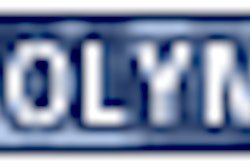
VIENNA - Harmonic mode-octave echocardiography is a well-established method of evaluating ventricular function, but it has a significant drawback: It requires a subjective visual inspection of endocardial movement and wall thickening that is not quantifiable.
In today's cardiac sessions of the 2002 European Congress of Radiology, Dr. Dietmar Kivelitz from the Radiology Institute of Charité Hospital in Berlin offered a new tissue tracking echocardiography technique that quantified regional cardiac wall abnormalities with far greater accuracy. The results were highly concordant with those of MRI, and can be used in tandem with MRI to produce a more accurate picture of ventricular wall motion abnormalities, he said.
"The purpose of this study was to compare the new technique of color-coded tissue Doppler and second harmonic imaging with MR tagging," Kivelitz said.
The study looked at 40 consecutive patients (11 women, 25 men, mean age 58.3 years) with a history of coronary artery disease with prior myocardial infarction.
A 2.5 mHz ultrasound scanner (Vivid FiVe, GE Medical Systems) was used to acquire tissue-tracking doppler echocardiography and second harmonic (mode-octave) images. Using the EchoPac software package, apical views were achieved by echocardiography to demonstrate the longitudinal motion of the myocardium towards the apex. The tissue tracking function consists of an off-line analysis of time-velocity integrals.
"If you use this method you get a typical time course of the velocity of the myocardium," Kivelitz said. "The part of the curve that is interesting for our study is the area during the systole under the curve calculated by the software with the help of the color coding. The velocity during this time is coded into different colors."
For each patient (and 40 normal control subjects), the researchers obtained a four-chamber view, a two-chamber view, and a long-axis that view that comprised the left ventricular outflow and the left ventricular infiltrate in one view.
The tracking integrals were compared with those of 40 normal subjects, and the integrals were considered pathological if there was a reduction below the 95% confidence interval.
MRI was performed on all patients using a Siemens Medical Solutions’ Magnetom Vision Plus 1.5-tesla scanner. Images were acquired using an ECG-triggered tagging sequence with a slice thickness of 6 mm, TR of 17, TE of 4 and flip-echo of 20°. Variable FOV was between 20-60 mm x 380 mm depending on patient size.
With the aid of an echo-sharing technique, the team achieved a temporal resolution of 35 msec. Views were similar to those acquired in echocardiography, including two- and four-chamber views, and long-axis views obtained with a stripe-tagging technique, in addition to 3 short-axis views obtained with a gripped tagging technique.
Analysis of wall motion was performed semi-quantitatively, grading the wall motion as 1) normal, 2) hypokinetic, 3) akinetic, and 4) dyskinetic. A 16-segment model was used according to American Society of Echocardiography standards.
Out of 640 wall motion segments, MRI found 384 normal segments, 183 hypokinetic segments, 50 akinetic segments, and 8 dyskinetic segments, with 7 segments that could not be interpreted due to artifacts.
Comparing MRI results with the two echocardiography techniques, MRI showed much better agreement with tissue tracking (97%, p=0.083) than with the second harmonic echo (82%, p=0.068), Kivelitz said.
In a comparison of segmental wall motion abnormality, tissue tracking yielded 94% sensitivity and second harmonic echo 78% sensitivity. Specificity was similar for both methods, and tissue tracking achieved higher overall accuracy.
In hypokinetic segments, tissue tracking was 94% concordant with MRI, compared to 61% concordance for second harmonic echo. In the akinetic segments, tissue-tracking echocardiography was 97% concordant with MRI compared to 75% for second harmonic echo.
"In conclusion, this new technique of tissue tracking Doppler echocardiography can quantify alterations in the longitudinal myocardial movement, and it enables the diagnosis of regional wall motion abnormalities," Kivelitz said. "In comparison to second harmonic echocardiography there is a significant increase of the diagnosis of regional wall motion abnormalities, and (tracking Doppler) may represent a new powerful method for the evaluation and quantification of regional myocardial infarction."
By Eric BarnesAuntMinnie.com staff writer
March 4, 2002
Related Reading
Ultrasound technique determines success of thrombolysis in AMI patients, January 21, 2002
Dobutamine stress echocardiography valuable after acute MI, December 7, 2001
Dobutamine stress echo is safe for chest pain workup in ED, July 7, 2001
Copyright © 2002 AuntMinnie.com



















